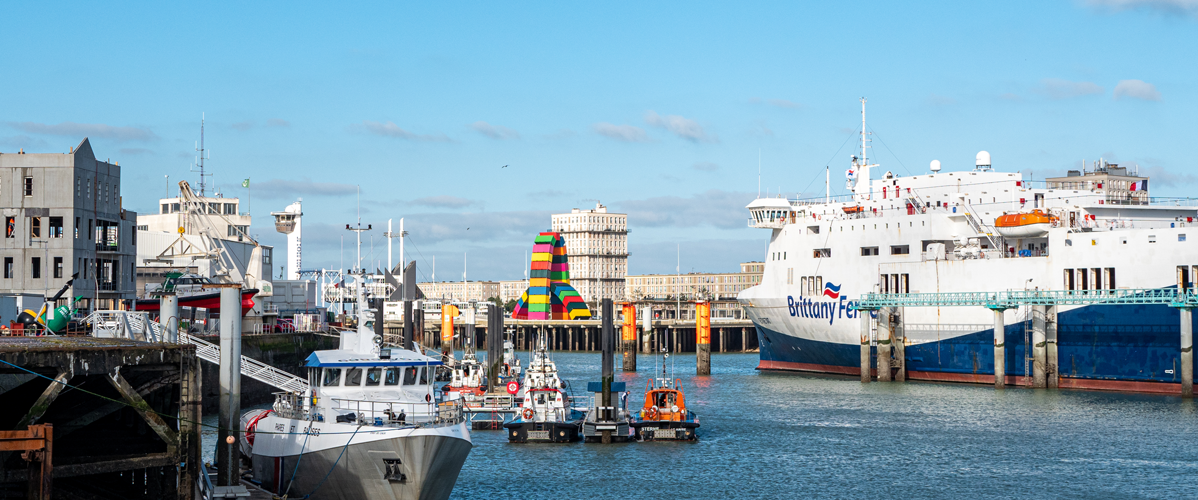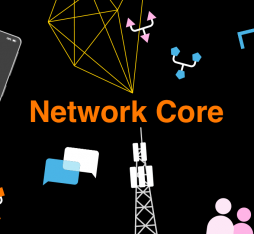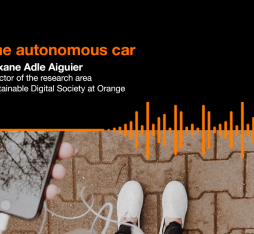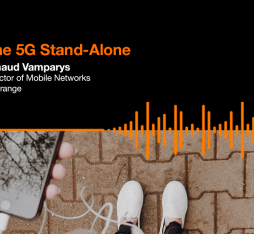“The Smart Port is a necessary technological shift towards open-air Industry 4.0 that meets a strong demand for greater connectivity and addresses a range of needs.”
5G has arrived safely In March 2021, Orange’s 5G network reached the majority of the Port of Le Havre, France’s leading container port for foreign trade, heralding the arrival of new services for harbour users.
From experimentation to standardisation
The benefits and potential applications of 5G were researched and analysed prior to its deployment in the area. In 2019, a consortium made up of EDF, Siemens and Nokia launched a test project in partnership with the Port of Le Havre to study the operation of a smart grid using 5G in the 26-GHz frequency band in a terminal that extended out to sea. That same year, the Le Havre Smart Port City initiative, in which Orange Business Services is involved, was selected as part of the French government’s call for projects called TIGA (Territoires d’Innovation de Grande Ambition — an initiative to encourage ambitious regional innovation). This Smart Port City project aims to increase the competitiveness and appeal of this port—and the surrounding region more widely—through digital innovation based on new mobile networks. More generally, Orange is participating as a carrier in the standardisation efforts of the 3GPP, to identify 5G’s use cases in the maritime and port sectors.
So why smart, connected ports?
In the short term, there is the potential for new value-added solutions for the port’s various players—companies, local authorities, loaders, ship-owners, passengers—supported by the commercial network in its current state, in the 3.5-GHz frequency band. Many use cases have been identified in Le Havre, in connection with manufacturers, port representatives, the urban community and the economic development cluster Pôle Mer Bretagne Atlantique. “The Smart Port concept represents a necessary technological shift, one that meets a strong demand for greater connectivity and addresses a range of needs, including port surveillance”, explains Hubert Segond, a 5G Project Manager at Orange. This is an opportunity to evolve towards an open-air Industry 4.0 model, based on wide and efficient network coverage, which includes a connection to the sea and with the city. Like all port ecosystems, Le Havre represents a veritable playground for exploiting the various advantages of 5G. Multiple use cases are likely to benefit from the new networks, such as those related to Smart Cruise, for optimising the flow management of people and goods. Other areas and applications are being studied, such as the possibility of introducing a self-driving shuttle between the port and the city or, in terms of security, the detection of incidents by drone, as well as other uses in relation to the IoT, energy and multimedia.”
Enhancing 5G’s features and capabilities
Implementing these future digital port solutions will involve taking advantage of all or part of the capabilities of new networks. 5G means faster speeds and better coverage in order to meet requirements such as large-scale connectivity, minimal latency for live data stream transmission, slicing for guaranteed service quality tailored to sensitive use cases, edge computing to process data closer to the network and the point of use, and so on. “In Antwerp, a tugboat management service is already in place to enable the remote supervision of tugboats via the transmission of images from HD cameras installed on board. This means that many ships can be guided to their point of arrival at the same time, for real-time, zero-latency control and an appropriate quality of service. What is possible at the port of Antwerp can be replicated in other ports. The standardisation efforts support this.”
A strong progression
The Smart Port projects underway or about to be launched are accompanied by stringent requirements in terms of both cybersecurity and social and environmental responsibility in order to minimise the energy footprints of ports.
The first services expected to emerge in Le Havre and other French ports as a result of 5G coverage will be centred on ship management, industrial and logistical needs and port surveillance. By 2023, the roll-out of standalone 5G and AI technologies will facilitate a more dynamic management of these ports’ networks.











